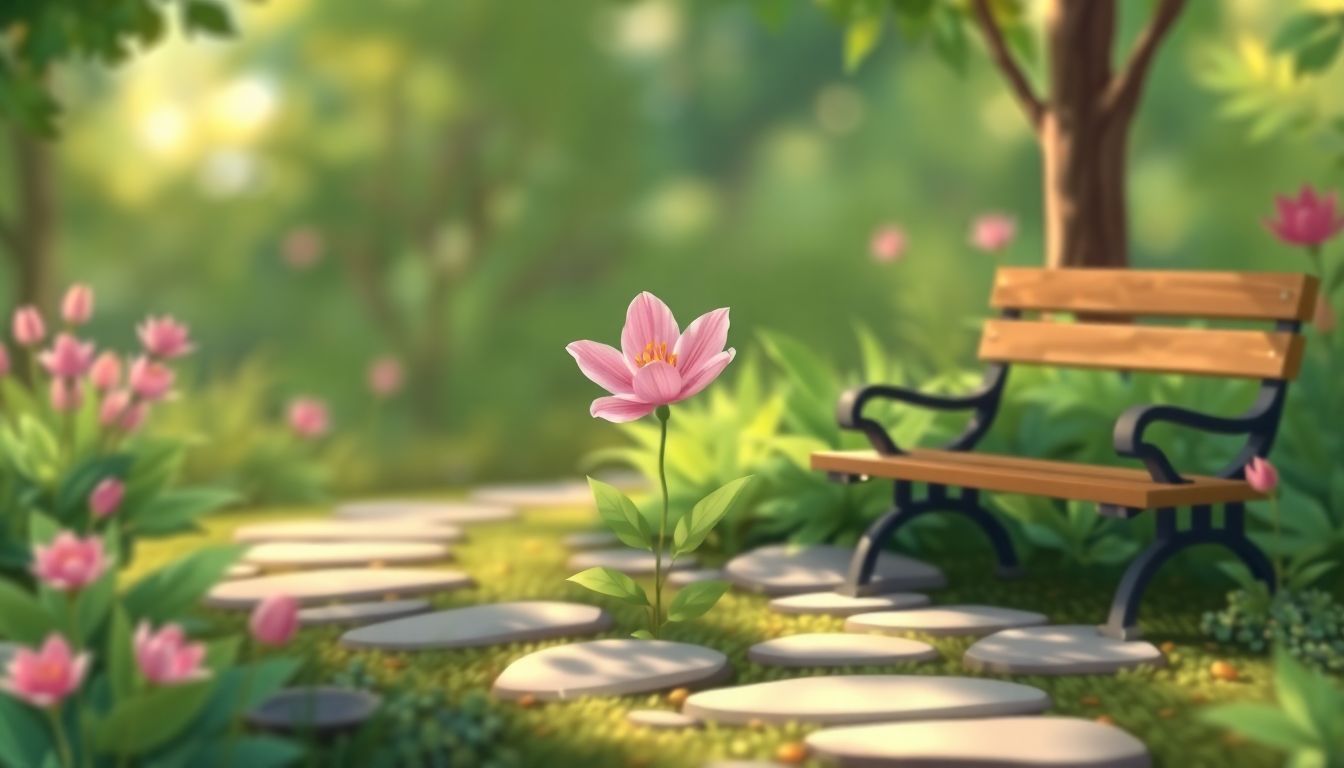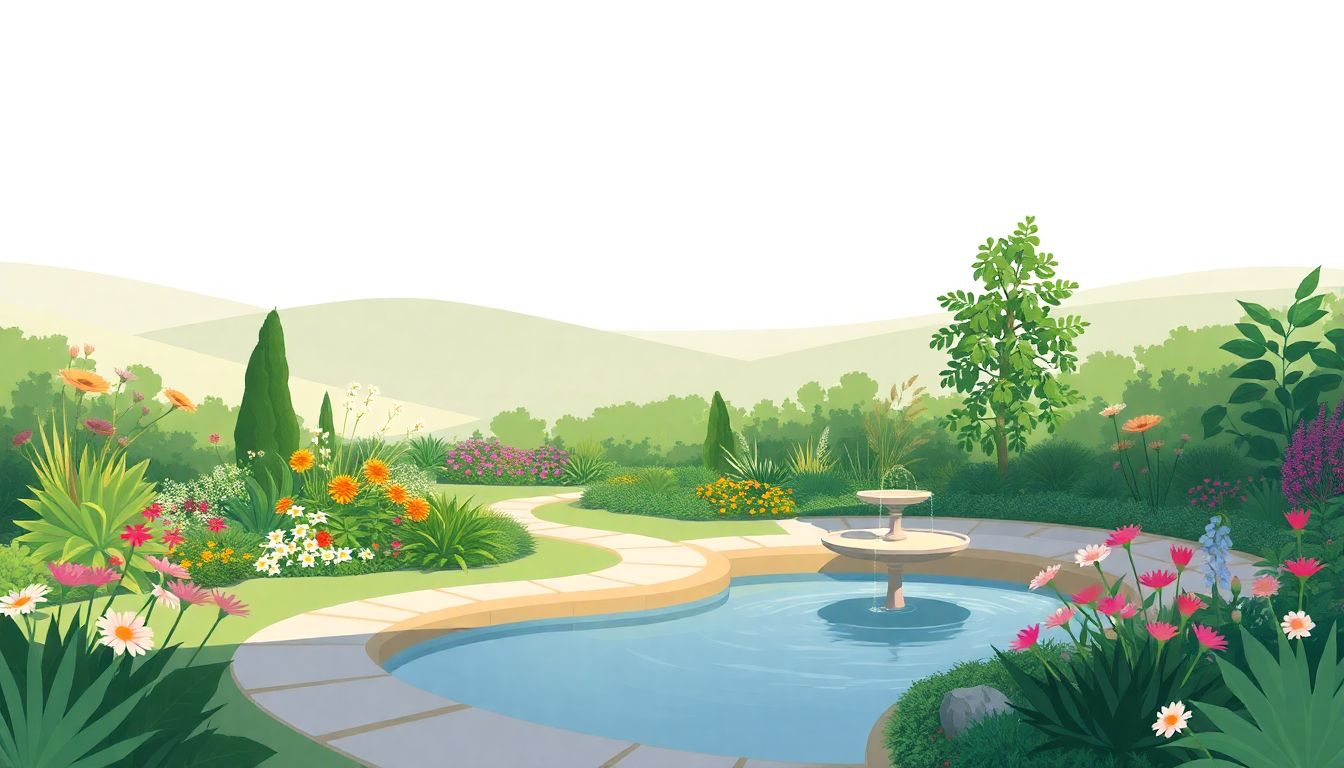Planning a botanical garden can feel overwhelming, right? With so many choices and factors to consider—from picking the perfect plants to designing an inviting layout—it’s easy to get lost in the greenery. But don’t fret! You’re not alone in this budding endeavor.
Stick around, and I promise you’ll find useful prompts and insights that can simplify your garden planning journey. Whether you’re a seasoned gardener or just starting out, there are tips out there that will help transform your vision into reality.
From understanding seasonal changes to engaging your local community, we’ll explore all the essential elements that make a botanical garden bloom beautifully. Let’s dig in!
Key Takeaways
- Define the purpose of your botanical garden (educational, recreational, or both) to guide planning.
- Utilize specific prompts with ChatGPT for tailored advice on themes, planting schedules, and plant choices.
- Choose native plants suitable for your climate to reduce maintenance and ensure better growth.
- Plan for seasonal changes by selecting plants that bloom in each season for year-round color.
- Create a budget that includes all potential costs, and explore grants or community support to fund your project.
- Regular maintenance is key; check for pests, set a watering schedule, and document your garden’s progress.

Best ChatGPT Prompts for Planning a Botanical Garden
If you’re looking to design a botanical garden, using ChatGPT can streamline the planning process significantly.
Here are some effective prompts you can enter to get tailored assistance:
- “List five unique themes for a botanical garden along with plant suggestions”
- “Suggest a seasonal planting schedule for a pollinator-friendly garden”
- “Provide design ideas for a sensory garden suitable for all ages”
- “What are the best native plants for a dry, desert-like climate?”
- “Create a step-by-step plan for developing a community botanical garden”
These prompts can help you gather creative ideas and actionable plans for your garden.
Step-by-Step Guide to Creating Your Botanical Garden
Creating a botanical garden is an exciting endeavor that requires careful planning and execution.
Start by outlining the purpose of your garden—whether it’s educational, recreational, or both.
Next, assess the available space and sketch a rough layout; it will help visualize where each section will go.
Prepare the soil by testing its quality and amending it as needed to create an optimal growing environment.
Choose your plants wisely—select native or climate-appropriate species that will thrive in your area.
Once your plants are chosen, dig holes and plant them according to their space requirements.
Finally, don’t forget to add paths and seating areas to enhance the visitor experience.
Choosing the Right Plants for Your Botanical Garden
Picking the right plants can make or break your botanical garden experience.
Start with native species, as they are already adapted to local conditions and require less maintenance.
Consider including a mix of perennials and annuals to ensure year-round interest and biodiversity.
For each area of your garden, select plants according to their sunlight and moisture needs.
Research seasonal bloom times to create a continuous display of color throughout the year.
Using ChatGPT, you can prompt: “What are the best perennials for attracting bees and butterflies?” to get focused advice.
Design Ideas for Different Botanical Garden Themes
Themed botanical gardens offer a unique experience and can be tailored to specific interests or educational goals.
A sensory garden calmingly engages all five senses, featuring fragrant plants, textured foliage, and colorful blooms.
Consider a tropical theme with exotic plants, palm trees, and vibrant flowers that transport visitors to another world.
For educational purposes, a medicinal herb garden can illustrate the uses of various plants.
Prompt ChatGPT with: “Suggest design elements for a water-wise garden” to explore eco-friendly features you can incorporate.
Each theme presents an opportunity to teach, inspire, and connect people with nature.

Seasonal Considerations for Botanical Garden Planning
When planning your botanical garden, it’s crucial to think about seasonal changes.
Different plants thrive in various conditions, so look for those that will bloom in each season.
For spring, choose flowers like tulips and daffodils to kick off the growth cycle.
In summer, consider planting sunflowers and zinnias for vibrant color that lasts.
For fall, opt for asters and chrysanthemums to extend your garden’s beauty.
During winter, evergreens can provide structure and interest, even in the cold.
Utilize ChatGPT with prompts like: “List plants that bloom in each season for a botanical garden” to create a seasonal checklist.
Don’t forget to plan for seasonal maintenance, such as mulching in winter and deadheading in summer.
Make use of local climate data to better understand what will flourish throughout the year.
Budgeting and Cost Estimation for Your Botanical Garden
Creating a budget is essential for a successful botanical garden project.
Start by outlining all potential expenses including plants, materials for paths, soil amendments, and tools.
Set aside funds for labor if you’re hiring help or consider enlisting volunteers to keep costs down.
Use ChatGPT to generate prompts like: “Create a budget plan for establishing a small botanical garden” to get a comprehensive financial outline.
Don’t forget to factor in ongoing costs such as watering, maintenance, and replacements for plants that don’t thrive.
Research local plant nurseries for cost-effective options, and consider starting seeds indoors to save money.
Also, check for grants or funding opportunities available for community garden projects, which can help alleviate costs.
Maintaining Your Botanical Garden: Tips and Tricks
Maintenance is the heartbeat of a thriving botanical garden.
Regularly check for pests and diseases to catch issues before they spread.
Use organic pest control methods whenever possible to keep your garden healthy.
Set a watering schedule based on the needs of your plants, ensuring they have enough moisture without overdoing it.
ChatGPT can assist with prompts like: “What are the best practices for maintaining a botanical garden?” to find tailored advice.
Consider mulching to retain soil moisture and suppress weeds, which can save you time and effort.
Regularly deadhead flowering plants to encourage further blooming and maintain a tidy appearance.
Lastly, don’t hesitate to document your maintenance process; it will help you plan for future years more effectively.

Engaging the Community in Your Botanical Garden Project
Community involvement is crucial for the success of your botanical garden.
Start by hosting informational meetings to outline your vision and gather feedback.
Encouraging local volunteers can turn into a rewarding experience for everyone involved.
Organize workshops or events to educate the community about plant care and gardening techniques.
Engage schools by creating educational programs that allow students to learn about botany firsthand.
Prompt ChatGPT with: “List ideas for community events focused on gardening” to expand your outreach strategies.
Creating an online platform for updates and volunteer sign-ups can keep interest alive.
Showcase community member contributions to create a sense of ownership and pride in the garden.
Using Technology in Botanical Garden Planning
Technology can greatly enhance the planning and maintenance of your botanical garden.
Consider using garden planning apps that allow you to visualize your layout digitally.
Geographic Information Systems (GIS) can help analyze soil types and determine the best plant placements.
Utilize online plant databases to research species suitability based on climate and soil conditions.
ChatGPT can assist with prompts like: “Recommend apps for botanical garden planning and maintenance” to guide your tech choices.
Incorporating smart gardening tools, such as moisture sensors, can optimize water usage.
Drones are also an option for larger gardens, helping with aerial surveys to identify problem areas.
Don’t overlook social media as a tool for community engagement and sharing garden updates.
Getting Inspired: Famous Botanical Gardens Around the World
Looking at famous botanical gardens can spark creativity for your own project.
The Royal Botanic Gardens, Kew in London is famed for its diverse plant collection and intricate landscapes.
In Singapore, the Gardens by the Bay showcases innovative designs like the Supertree Grove, merging nature with technology.
Visit the Missouri Botanical Garden in the U.S., known for its emphasis on conservation and education programs.
Research these locations by prompting ChatGPT with: “What are the most iconic botanical gardens and their unique features?”
Each of these gardens offers unique concepts and design elements that you can draw inspiration from.
Don’t hesitate to create a mood board of your favorite elements to guide your garden design process.
Studying the architecture and layout of these spaces can give you insight into creating a visitor-friendly experience.
FAQs
Research native plants suited for your climate zone. Consult local gardening resources or botanical gardens for recommendations, focusing on plants that thrive in your area’s soil and weather conditions.
Host community meetings, workshops, and volunteer days. Collaborate with local schools and organizations to involve residents of all ages in planting and maintaining the garden.
Plan for seasonal changes in plant growth, flowering times, and maintenance needs. Choose a mix of perennials and annuals to ensure year-round interest and consider winter protection strategies.
Use recycled materials for paths and beds, start from seeds rather than purchasing plants, and consider bartering with local businesses or soliciting donations from the community for supplies.
